Productive Wetland Important to Hundreds of Bird Species
Frank Lake is a restored wetland located 6 km east of High River, Alberta, 50 km south of Calgary. The lake is controlled by Ducks Unlimited Canada for wildlife management purposes, and is an Important Bird Area and Key Biodiversity Area. I recently made two visits, accompanied by some friends, Bob, Hugh, Julie, Stew and Sal, all enthusiastic photographers. This locale is better known to birdwatchers than photographers and it proved to be a revelation to us, only one of whom were aware of its existence.
I think we were all surprised to see the American White Pelican, a large aquatic soaring bird from the order Pelecaniformes. They are found across the north-central and western United States. In Canada, they are found from the interior of British Columbia, east to northwestern Ontario. They migrate south to the Gulf Coast states and Mexico in winter.
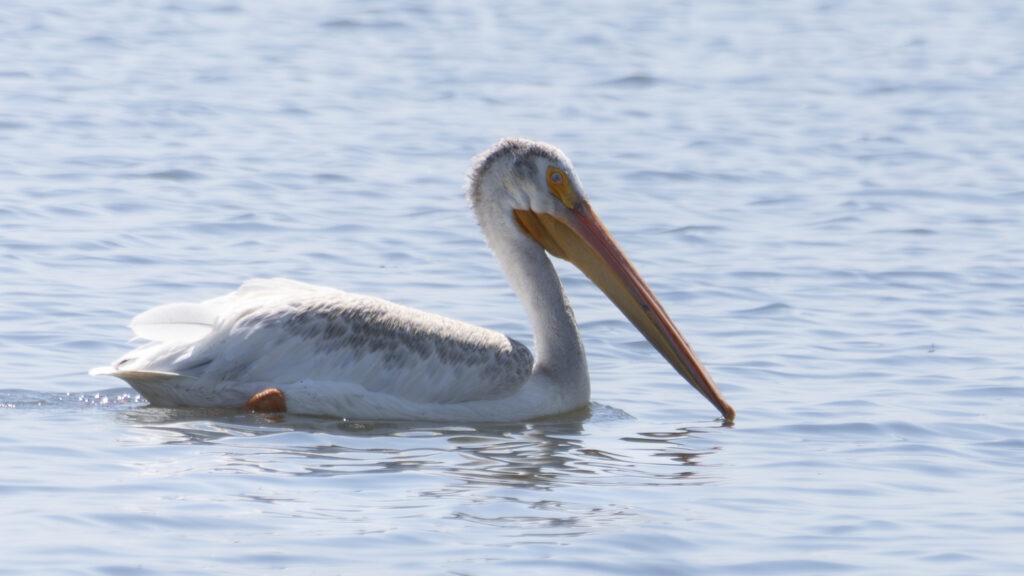
This white pelican has a wingspan of about 95–120 inches (240–300 cm). Also, the species has the second largest average wingspan of any North American bird, after the California Condor. This large wingspan allows the bird to easily use soaring flight for migration. The body weight of these birds typically averages between 11 and 20 lbs. (5.0 and 9.1 kg).
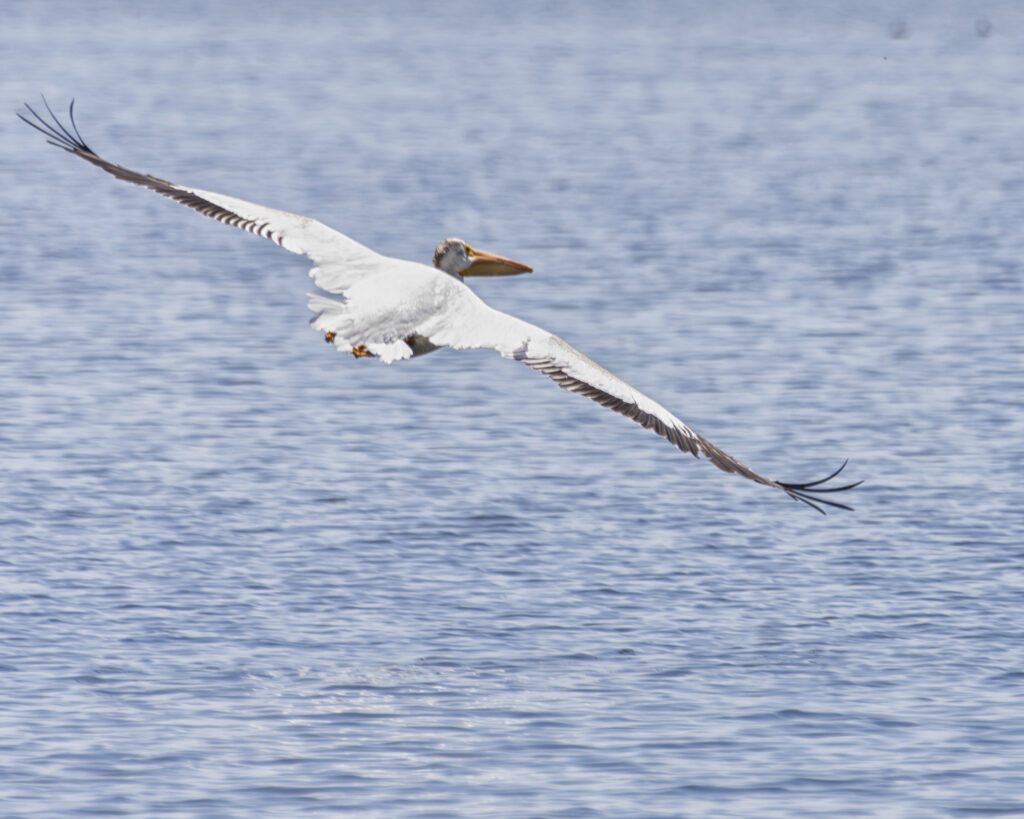
The American avocet is a large wader in the avocet and stilt family, found in North America. It spends much of its time foraging in shallow water or on mud flats, often sweeping its bill from side to side in water as it seeks crustacean and insect prey. It may be a large wader, but with a body weight of 275–420 g (9.7–14.8 oz), it’s tiny in comparison to the pelican.
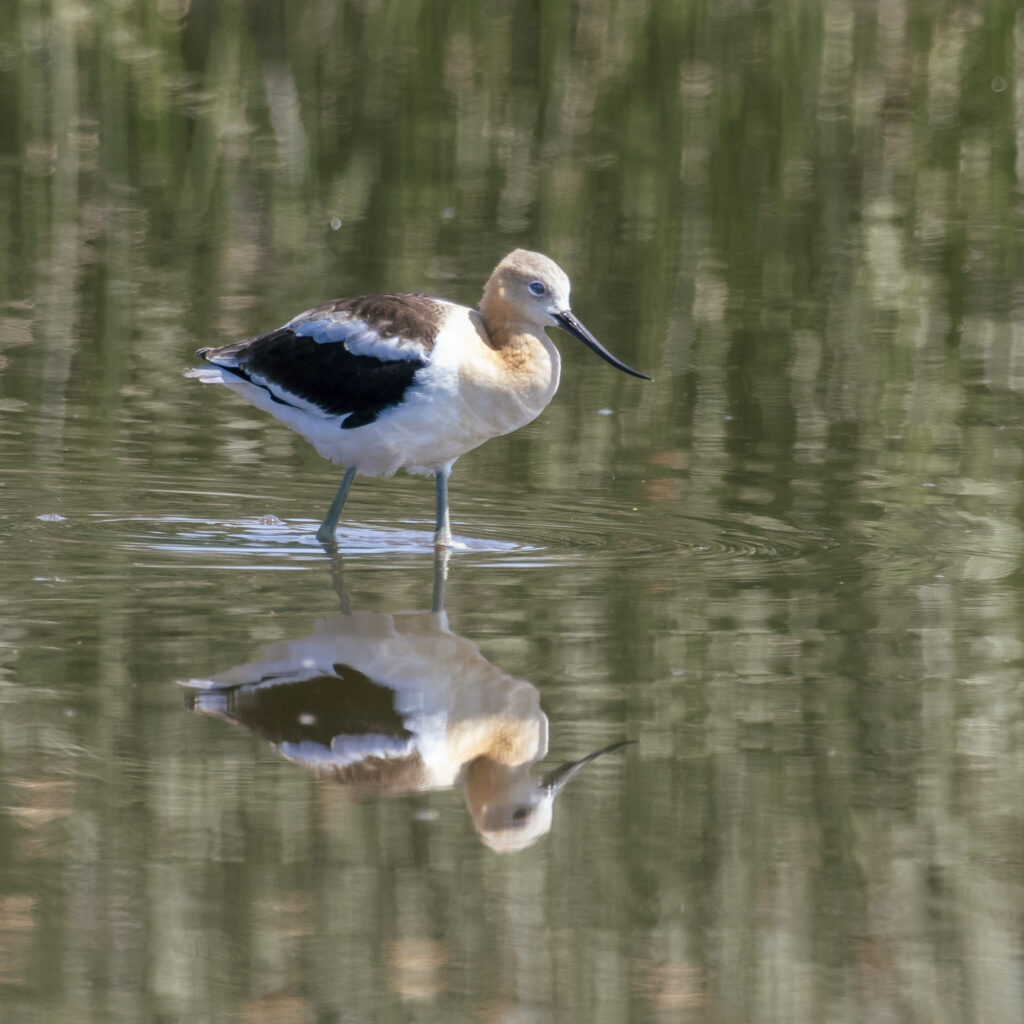
The Common Tern is fun to watch. They fish in the shallows waters of the slough, hovering (as seen in the photograph below) before plunging headlong into the water to snatch their prey.
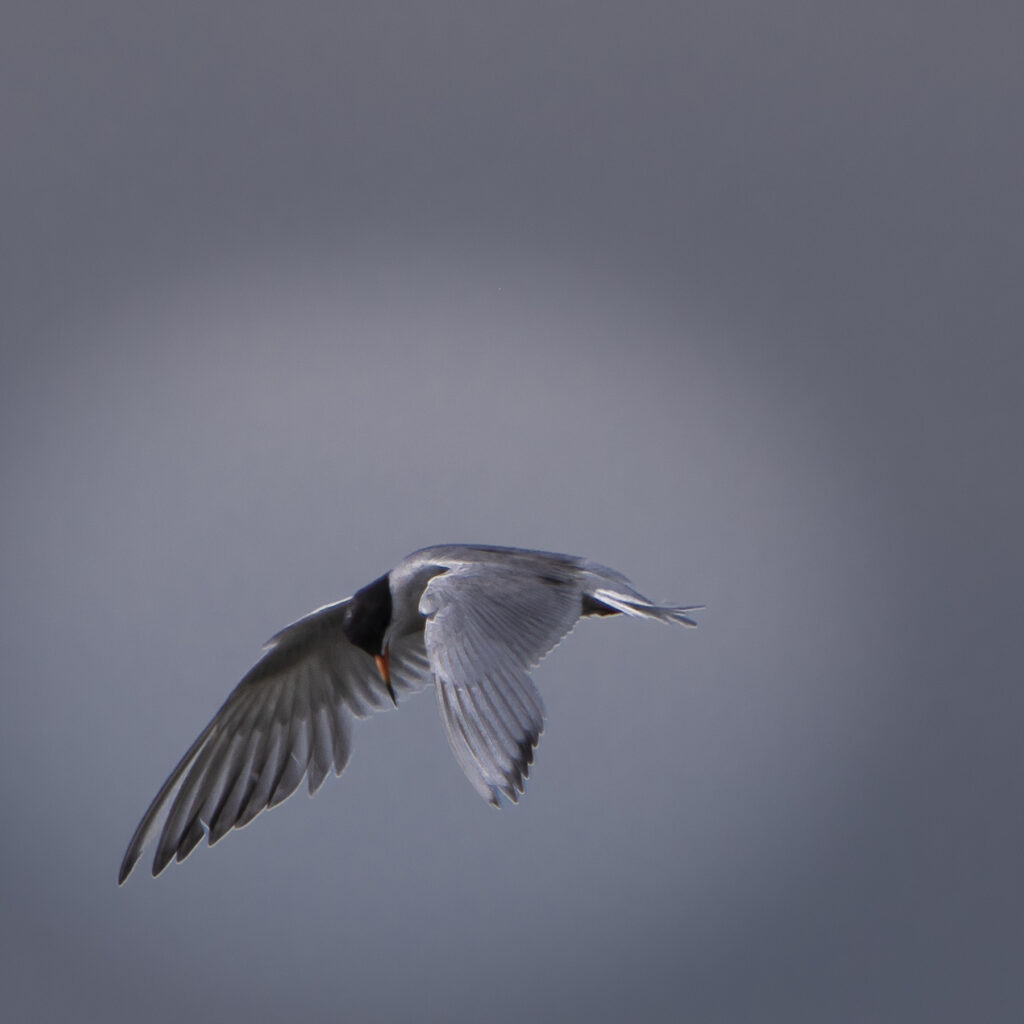
As I approached this next bird, I wasn’t sure what it was and what it was doing. I had a suspicion it was a Killdeer, based on its behaviour, something I remembered from my elementary school education. I was able to validate my recollection by finding a published photo.
You sometimes see an adult killdeer in gravel, such as along a rocky railroad easement, or on a dirt road. As you approach, the killdeer may suddenly develop a broken wing. It struggles in front of you, as if it can barely walk, let alone fly. One or both wings drag pitifully on the ground. This is precisely what I captured in the following photograph.
If your instinct to rescue the killdeer overcomes you, and you try to catch the bird, it almost lets you reach out and pick it up. But somehow, while struggling to keep its balance, the killdeer manages to stay one step ahead of you. As you pursue it, the killdeer leads you farther and farther away from its four downy killdeer babies crouching on the ground or half hidden under a tiny bush.
When the killdeer feels that the young are safe from you, its broken wing heals suddenly, and the bird flies away, calling a loud “KILL-DEE” that sounds like a jeer.

This water bird is difficult to identify with certainty. It is a grebe, not a duck. Grebes are similar to loons, but smaller.
The bird’s bill indicates it is a pied billed grebe, but I’ve been unable to find a photograph that distinguishes it from other sub-species of pied billed grebes. Any guidance is welcome!
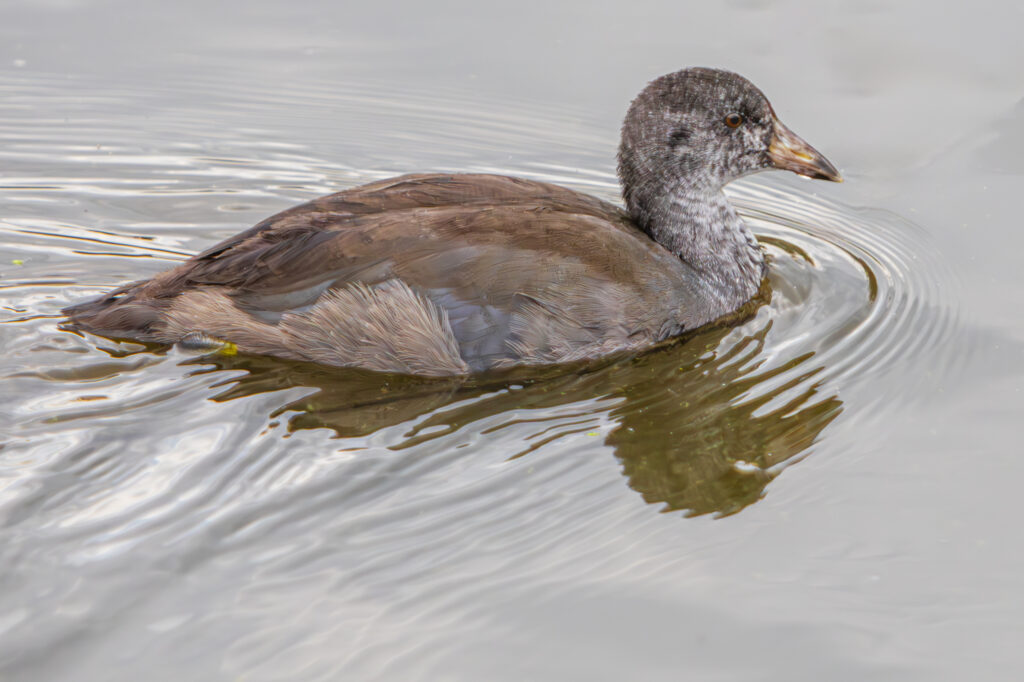
The American Coot is a plump, chickenlike bird with a rounded head and a sloping bill. Their tiny tail, short wings, and large feet are visible on the rare occasions they take flight. The little birds in the following photograph are the offspring of an American coot mother. Dare I refer to them as “cootlings”?
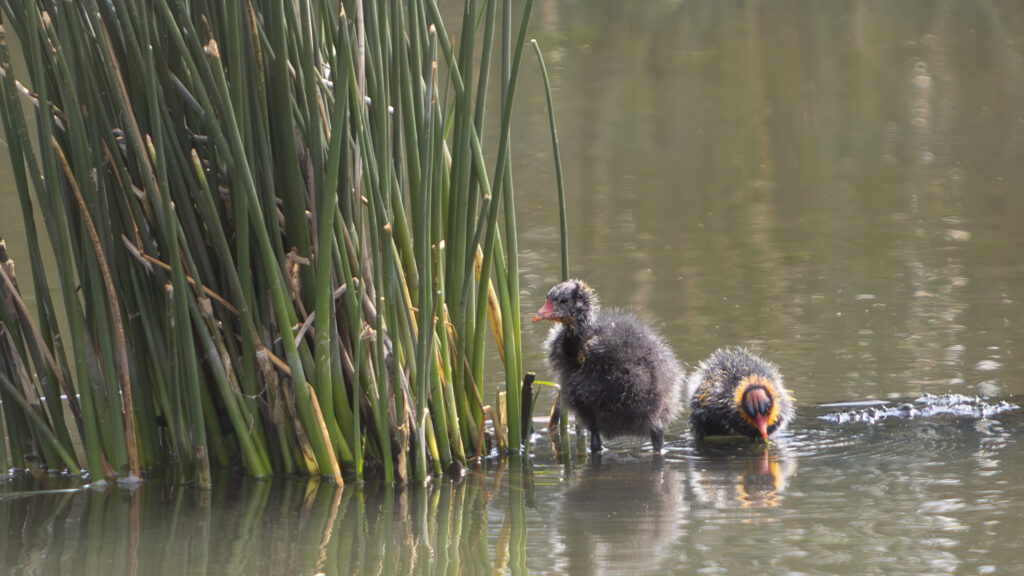
This is my favourite picture from the many I took at Frank Lake. I was fortunate to capture this scene of Mrs. Coot feeding one of her babies.
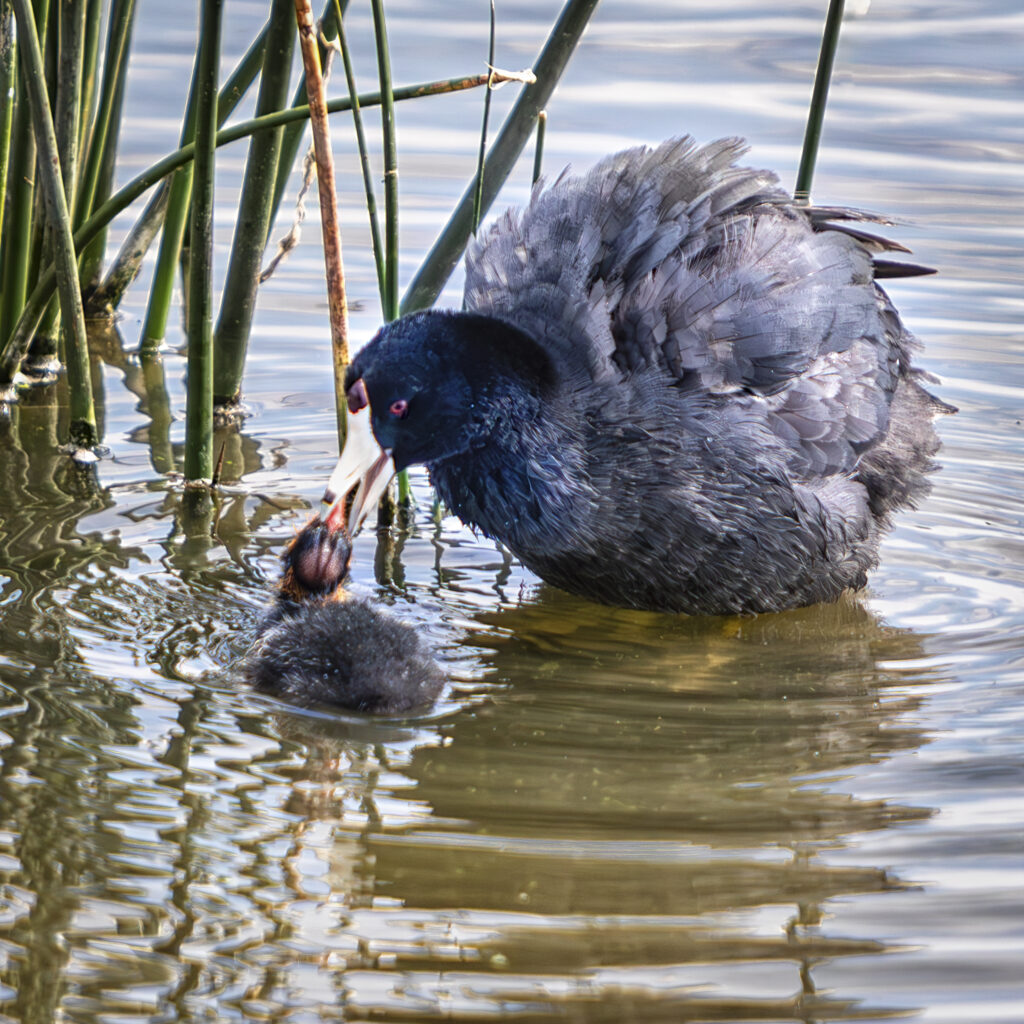
Frank Lake proved to be a great place for some challenging photography. We were impressed by the numbers and varieties of waterfowl at this slough in the middle of the prairie.

